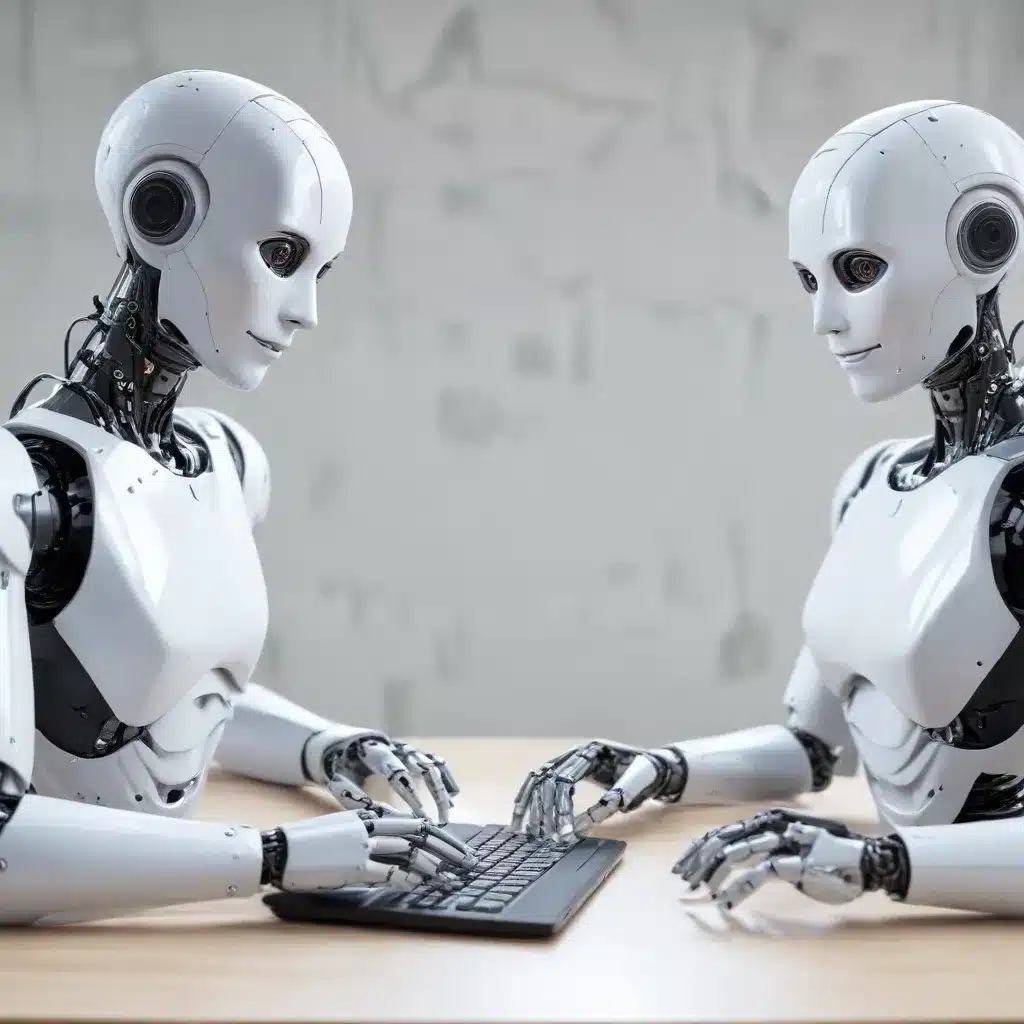
The Power of RPA and AI in Transforming Workflows
In today’s fast-paced business environment, organizations are constantly seeking new ways to improve efficiency, reduce costs, and enhance productivity. Emerging technologies like robotic process automation (RPA) and artificial intelligence (AI) have emerged as game-changers, enabling IT professionals to streamline repetitive tasks, unlock valuable insights, and empower their teams to focus on more strategic initiatives.
Unlocking the Full Potential of RPA
Robotic process automation is a software technology that allows businesses to automate high-volume, rules-based tasks traditionally performed by human workers. Unlike traditional automation, RPA is non-invasive, rapidly deployable, and can be integrated with legacy systems, making it an attractive solution for organizations looking to modernize their operations.
One of the key benefits of RPA is its ability to boost return on investment (ROI) through cost savings and increased productivity. A recent Forrester Consulting study commissioned by IBM found that after deploying IBM’s RPA solution, a composite organization achieved a 124% ROI over three years, with a net benefit of $549,000 and enhanced process visibility, data, and compliance.
By delegating repetitive tasks to software “bots,” RPA enables human workers to focus on more strategic, value-added activities. These bots can perform a wide range of functions, from data entry and extraction to email management and report generation, all with unparalleled speed and accuracy.
Integrating RPA with AI takes this capability to the next level. By leveraging machine learning algorithms and natural language processing, RPA bots can now understand context, make complex decisions, and even engage in natural conversations. This convergence of RPA and AI, often referred to as “intelligent automation,” is redefining the way organizations approach digital transformation.
Harnessing the Power of AI for Enhanced Productivity
While RPA excels at automating structured, rules-based tasks, AI can tackle more complex, cognitive processes. From natural language understanding to computer vision and predictive analytics, AI is revolutionizing how organizations extract insights from data and make informed decisions.
One of the most exciting applications of AI in the IT domain is its ability to identify and prioritize automation opportunities. By analyzing existing business data, AI-powered process mining and task mining tools can surface high-impact, repetitive tasks ripe for automation, helping IT teams build a robust automation pipeline.
Moreover, AI can be seamlessly integrated into RPA workflows, enabling software bots to apply advanced analytical capabilities to their tasks. This integration allows for more intelligent decision-making, improved accuracy, and enhanced adaptability – all of which contribute to greater productivity and efficiency.
Becoming a Fully Automated Enterprise
To truly harness the power of RPA and AI, organizations must adopt a holistic, enterprise-wide approach to automation. This means moving beyond siloed pilot projects and instead establishing a comprehensive automation program that spans multiple departments and business functions.
The path to becoming a “fully automated enterprise” typically involves three key stages:
-
Laying the Foundation: Kickstart the automation journey by identifying quick-win opportunities and demonstrating the tangible benefits of RPA and AI through pilot projects.
-
Scaling Automation: Shift the focus to top-down, cross-enterprise automation initiatives that have a significant impact on the organization’s bottom line and operational efficiency.
-
Achieving Enterprise-wide Automation: Capture automation opportunities across the entire organization, empowering employees at all levels to become “citizen developers” who can build their own automations.
By embracing this holistic approach, organizations can unlock the true potential of RPA and AI, transforming their IT operations and driving meaningful business outcomes.
Overcoming Challenges and Driving Adoption
While the benefits of RPA and AI are clear, implementing these technologies at scale can present its own set of challenges. Issues around data availability, process readiness, and organizational change management can all hinder successful adoption.
To address these challenges, IT leaders must take a multi-pronged approach:
-
Fostering a Culture of Innovation: Encourage an organizational mindset that embraces automation and AI as strategic enablers, rather than as threats to job security.
-
Investing in Upskilling and Reskilling: Empower employees with the necessary skills to thrive in an increasingly automated work environment, whether through formal training programs or hands-on learning opportunities.
-
Ensuring Robust Governance and Security: Establish clear guidelines and processes to address concerns around data privacy, algorithmic bias, and the responsible use of AI.
-
Collaborating Across the Organization: Break down silos and foster cross-functional collaboration, as successful automation initiatives often require input and buy-in from stakeholders across the enterprise.
By addressing these challenges head-on, IT professionals can drive widespread adoption of RPA and AI, transforming their organizations into agile, responsive, and highly productive entities.
Conclusion: Embracing the Future of Work
As the pace of technological change continues to accelerate, organizations that embrace RPA and AI will be well-positioned to thrive in the digital age. By automating repetitive tasks, unlocking data-driven insights, and empowering their teams to focus on higher-value work, IT professionals can enhance productivity, improve employee satisfaction, and drive sustainable growth.
The future of work is here, and it’s powered by the seamless integration of human ingenuity and machine intelligence. By harnessing the power of RPA and AI, IT professionals can position their organizations for long-term success, redefining the way they approach business challenges and deliver exceptional value to their customers.
To learn more about how IT Fix can help you harness the power of RPA and AI in your IT operations, visit our website or speak with one of our automation experts today.












